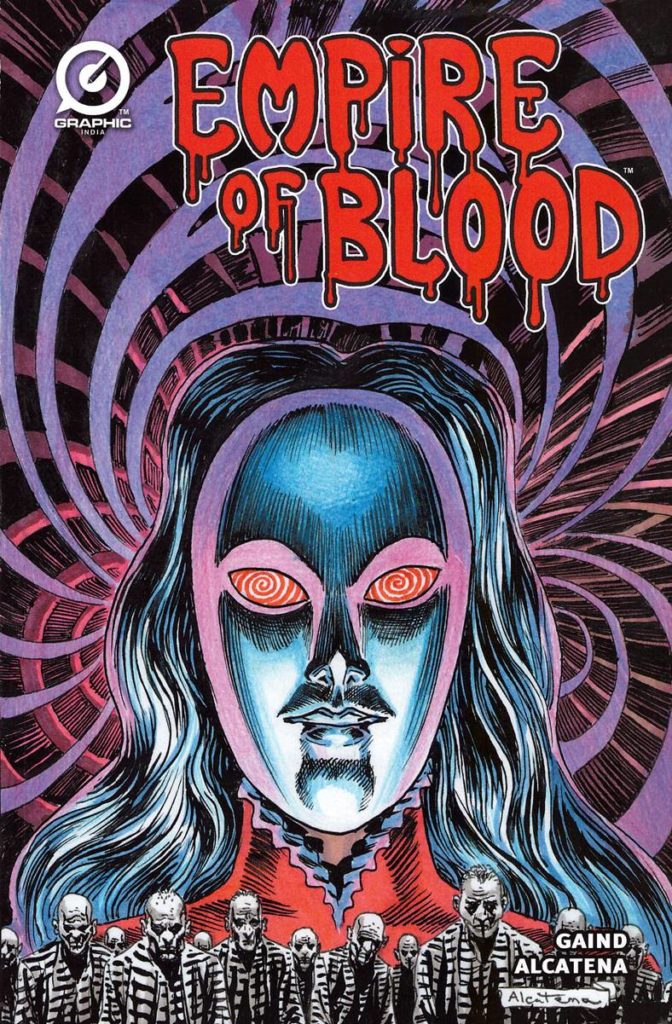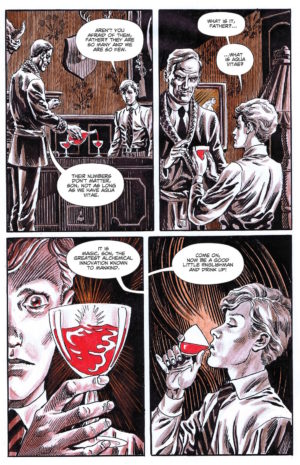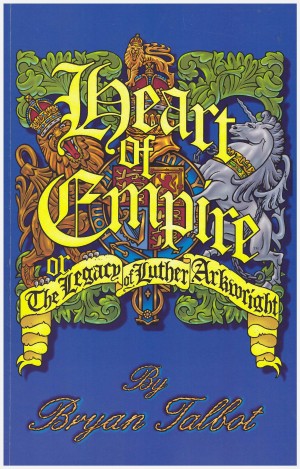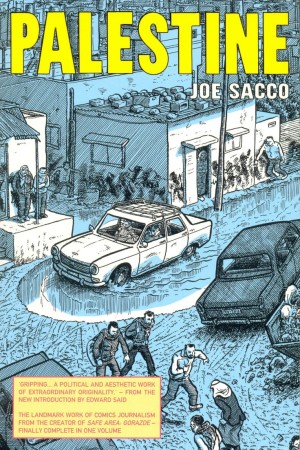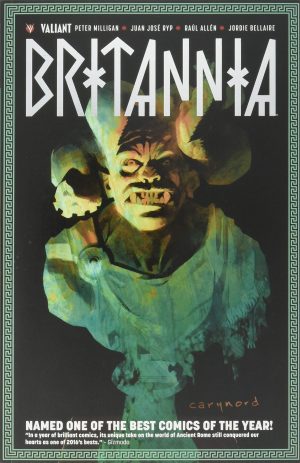Review by Ian Keogh
Empire of Blood’s lurid cover is a terrible misjudgement. While it has a relevance to the content, the expectation it sets is of a trashy SF and horror combination, and is so likely to disappoint buyers. Simultaneously, anyone who might be interested in a smart extrapolation of colonialism aligned with the racist ideology of the mid-20th century won’t expect to find it under that cover.
Arjun Raj Gaind’s alternate world presents a British Empire strengthened by World War I that grew to occupy Europe alongside its further flung territorial acquisitions. This is largely due to the discovery of Aqua Vitae, a substance drunk by the establishment that prolongs life and makes soldiers invincible. Growing up in India, the young Tom Lawrence gradually learns the price his privilege extracts from the local population. Gaind spends some time setting this up, over an opening chapter showing the young Tom before moving forward five years. Gaind’s imaginatively constructed society represses the Indian population at every turn, criminalising those who break impossibly restrictive laws, and it underlines slogans reinforcing an insidious hate. Compensation for a lack of allegorical subtlety comes via a righteous anger regarding British subjugation of India.
Enrique Alcatena’s detailed art is deliberately old fashioned, echoing adventure serials from old British boys’ comics, while mixing steampunk contraptions with the period feel of the 1930s. Empire of Blood is actually set a few decades later, but the look cements a feeling of unchanging continuity. Giand’s plot calls for some interesting devices, and Alcatena’s interpretation of these is great, old-fashioned to match the period, but simultaneously scary, and the use of a sepia wash with only very few highlights in red, mostly blood, is further period emphasis.
Much is told in broad strokes, Giand saving one explanation in particular as a surprise when readers are likely to have figured the truth out long before. That’s largely irrelevant in view of the imagination applied in the world building, the structures and contraptions that bolster the plot. In weaker moments logic is sacrificed for drama, and the introduction of new elements in the final chapter undermines much of the anger as it steers the plot into the horror territory suggested by the cover. Tom’s destiny is fulfilled, but it’s ultimately too easy. It’s not enough to negate a generally smart adventure with something to say about the way many view the world. Don’t let the cover put you off.
The graphic novel is strangely unavailable from online booksellers, while the four individual comics comprising it can be easily found. On Amazon UK the cover and synopsis are listed under Wes Craven’s Coming of Rage. It’s all too easy to consider it a conspiracy against a justified rant against colonialism, but is probably human error.
